Essential Tips for Safe Driving in Thailand
If you're a foreigner planning to rent a car and explore Thailand by driving, there are some important things to keep in mind before you start your journey! The first crucial step is to ensure you have an International Driver's Permit. Once you have that sorted, it's essential to familiarize yourself with navigating Thailand's roads like a seasoned driver for your safety.
You can practice for the Thai driving license written test using the practice questions provided on this site.
Thailand is known to have some of the most challenging driving conditions globally, so what can you do to stay safe on the road? Safe driving in Thailand begins with understanding the road conditions, traffic regulations, and the driving behaviors of local drivers. For instance, driving in Thailand follows the left-hand side of the road. Additionally, be prepared for the bustling presence of motorbikes maneuvering through traffic.
By adhering to these guidelines, you can confidently traverse Thailand's roads and make the most of your travel experiences. Let's embark on a road trip in Thailand and delve into all you need to know to navigate the country's highways with confidence.
Driving on the Streets of Thailand: What You Need to Consider
Exploring the roads of Thailand can be exciting, yet it may feel daunting for new drivers. Driving in Thailand demands adaptability and caution due to various factors like traffic laws and congestion. In this guide, we'll share valuable tips to help you navigate Thailand's roads safely, ensuring a smooth and pleasant driving experience.
1. Thailand has a variety of road conditions.
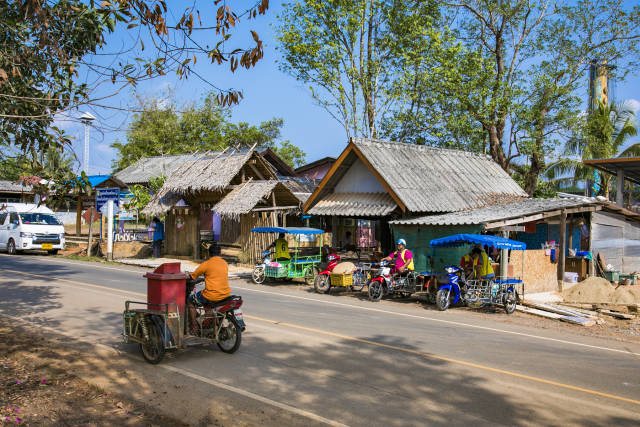
In Thailand, highways are usually in good condition and straightforward to follow, though traffic congestion can occur. Conversely, rural roads tend to be narrow, winding, and dimly lit. Driving cautiously, particularly at night, is crucial on these routes.
Additionally, it's important to be mindful of the weather. Thailand's rainy season, spanning from May to October, can result in flooded roads and landslides. Drivers should exercise extra caution during this period and carefully plan their journeys.
Helpful advice: Be alert for poor road conditions like potholes, loose gravel, and debris no matter the road you're traveling on.
2. Thailand has numerous narrow and challenging streets to navigate.
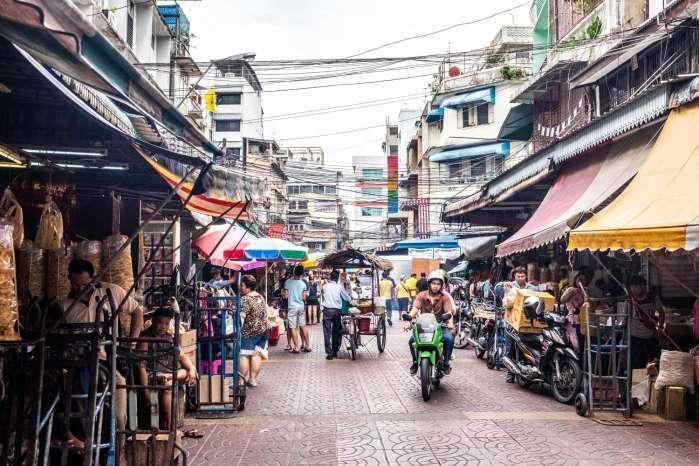
Driving through narrow streets or alleys in Thailand can be daunting for new drivers, but it's a skill that can be honed with practice. When maneuvering through small alleys, it's crucial to proceed slowly and remain vigilant, as these streets are often crowded with pedestrians, motorbikes, and parked cars. One key aspect to remember is to exercise patience and refrain from making sudden maneuvers. Alleys can be tight and winding, so take your time and watch out for obstacles.
Additionally, it's essential to be mindful of parking regulations in alleys. Many areas have designated parking spaces or specific times for parking, so be sure to observe signs and avoid parking in restricted zones.
3. Stray dogs are frequently seen on roads in Thailand.

"Soi dogs," the term used in Thailand for stray dogs, are a familiar presence on the streets and highways of the country. While many soi dogs are friendly and gentle, it's essential to be cautious when driving near them. They might unexpectedly run onto the road, endangering both themselves and drivers.
Here are some tips for safely sharing the road with soi dogs:
- Slow down: Reduce your speed when approaching areas where soi dogs are common. This allows you more time to react if a dog enters the road.
- Use your horn: If you spot a soi dog near the road, honk your horn to deter it. This can help prevent the dog from running onto the road.
- Avoid sudden movements: If a soi dog suddenly appears in front of your vehicle, refrain from making abrupt maneuvers. Stay composed, decelerate gradually, and, if possible, move to the side of the road.
- Maintain distance: Refrain from attempting to pet or feed a soi dog while driving. Keep a safe distance and avoid direct eye contact, as it may be perceived as a threat.
4. The rainy season increases the risk of flooded roads.
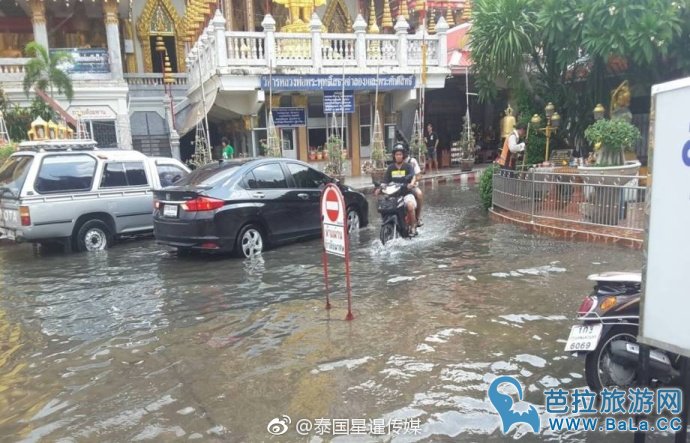
Driving in heavy rain in Thailand can be a tough and risky task, especially for those unfamiliar with the local weather and driving conditions.
The rainy season in Thailand typically spans from May to October, requiring drivers to take additional precautions for their safety on the road.
Remember the fundamentals from your driver's education class when driving in heavy rain: maintain a slow speed, use your headlights, and avoid sharp turns. Bangkok, in particular, is susceptible to flooding – even its elevated highways can get submerged! Therefore, exercise extra caution when driving through flooded areas during heavy rain, and if the water level is too high, avoid driving through it entirely. Seek out a raised establishment where you can park or pull over to prevent getting stranded on the road.
5. Numerous roads experience heavy congestion during rush hour.
With a multitude of cars, motorbikes, and various vehicles crowding Thailand's roads, maneuvering through the traffic can be a challenging endeavor for drivers. However, fret not, as we have some tips to simplify your driving experience in Thailand.
The key is to stay attentive and composed. Reacting with anger or aggression will not improve the situation. It's crucial to stay calm and refrain from sudden maneuvers, particularly when switching lanes or making turns.
Another valuable suggestion is to plan ahead and depart early to evade rush hour congestion. Rush hour in Thailand commonly falls between 7:00 AM to 9:00 AM and 4:00 to 7:00 PM, with roads becoming heavily congested during these periods.
Finally, numerous major cities in Thailand feature toll roads or expressways that can assist in bypassing traffic congestion. Nevertheless, these roads typically necessitate payment, so ensure you have adequate cash or a prepaid pass to settle the toll fees.
6. Thailand drives on the left-hand side of the road.
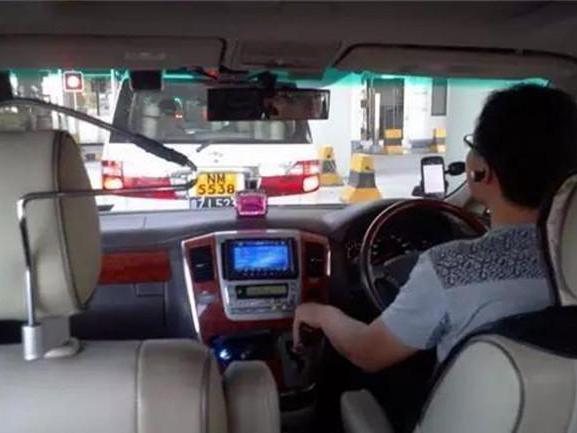
Driving on the left side of the road can be a challenging adjustment for those accustomed to driving on the right. This is the norm in countries like Thailand, the United Kingdom, and Australia. When driving on the left, it's crucial to remember that the driver's seat is on the right side of the car, which may require some acclimatization, as well as shifting gears with the opposite hand. Additionally, traffic patterns may differ, with left turns being more common than right turns in certain areas.
Paying attention to road signs and signals is essential to avoid confusion. In Thailand, where driving is on the left, it's common to observe mopeds or scooters traveling against traffic flow for shortcuts like U-turns.
Local advice: Before driving in busy areas, practice on quieter roads. This will help you become familiar with diverse driving styles and build confidence.
7. Bangkok has a wide-reaching network of expressways.
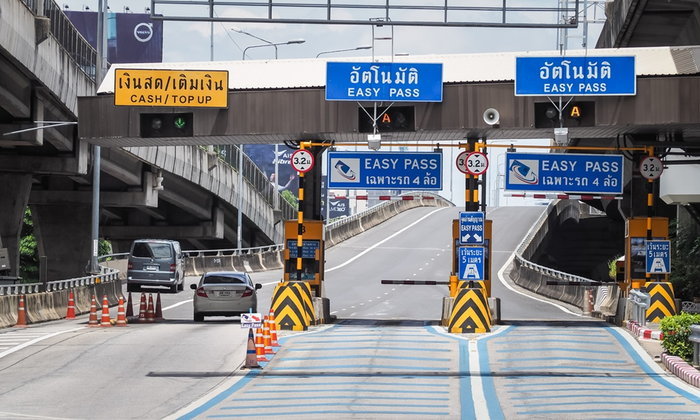
When driving in Bangkok, you will probably come across the city's extensive system of expressways. These elevated highways offer a quick and effective means of navigating the city, but they can be intimidating for those unfamiliar with them.
Here are some tips for navigating Bangkok's expressways:
- Plan your route in advance: Before starting your journey, familiarize yourself with the expressways you will be using and the locations of your exits. Utilize a GPS or map for guidance.
- Pay attention to signage: Signs on Bangkok's expressways can be complex, particularly for drivers new to the city. Look out for exit signs, toll booth indicators, and speed limit signs.
- Mind your speed: The speed limit on Bangkok's expressways is 90 km/h (56 mph), but many drivers exceed this limit. Stay in the right lane and allow faster vehicles to pass on the left.
- Prepare for tolls: Most of Bangkok's expressways require toll payments, so ensure you have sufficient small bills and coins on hand. Toll fees vary based on the distance traveled.
- Consider rush hour: Bangkok's expressways can become heavily congested during peak traffic hours, especially near exits leading to popular business districts. If possible, try to avoid driving during these busy periods.
8. An Easy Pass (ETC) is crucial for individuals who regularly use tollways in Thailand.
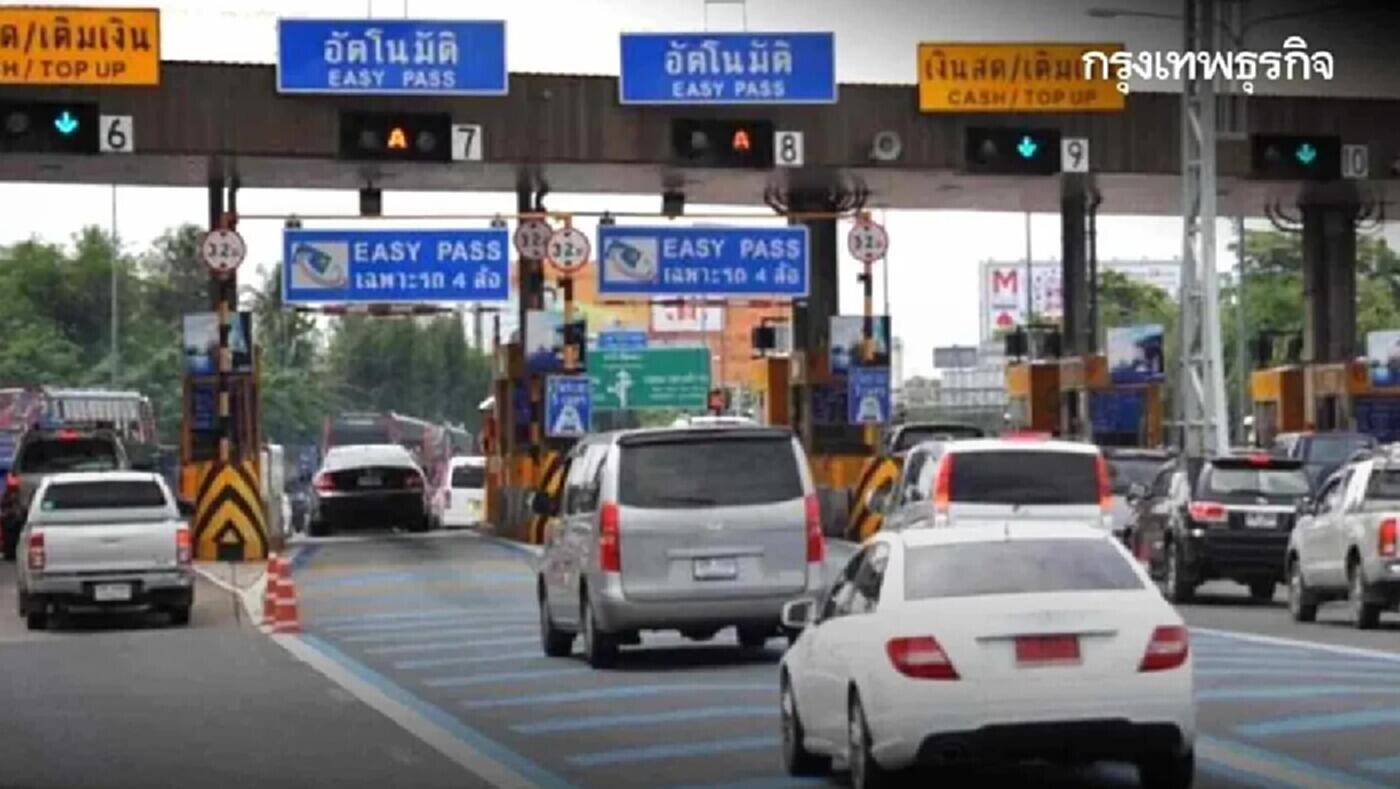
For frequent users of tollways in Thailand, acquiring an Easy Pass can significantly enhance your experience. This prepaid ETC (electronic toll collection) card provides a more convenient method of toll payment. With an Easy Pass, you can effortlessly travel on Bangkok's expressways without the need to stop and pay tolls.
To acquire an Easy Pass for Bangkok's expressways, follow these steps:
- Gather required documents such as passport, car registration, and an initial deposit of 300 THB.
- Visit an Easy Pass service center at designated locations or make an online purchase through the website.
- Complete the registration process by submitting personal and vehicle details.
- Receive an Easy Pass card, OBU device, and installation instructions.
- Replenish the card balance using various channels like online banking or convenience stores.
- Install the OBU device in your vehicle as per the provided instructions.
- Once your account is active, utilize your Easy Pass to settle toll fees on the expressways.
NOTE: Regularly top up your account to ensure sufficient balance for your journeys.
9. The M Flow system on Bangkok's Motorway 9 (Bang Pa-In-Bang Phli) simplifies the use of tollways.
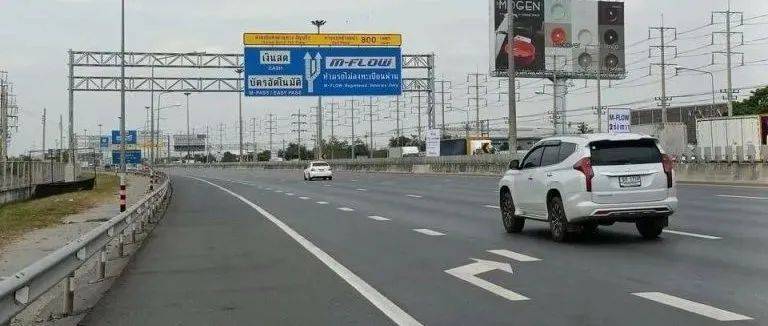
The M Flow system eliminates the need to stop or reduce speed at toll booths. Instead, video cameras record your car's license plate as you pass through an M Flow gate. However, this system is currently operational only at Motorway 9 (Bang Pa-In-Bang Phli) at the Thap Chang 1, 2, and Thanyaburi 1 and 2 gates, linking Bangkok to nearby districts.
- Upgrade your Easy Pass to an Easy Pass Plus account by registering on the Thai Easy Pass website and inputting your car details, phone number, and email.
- Obtain the smart card number and OBU number provided with your Easy Pass card.
- Once configured, you no longer need to stop at toll booths. The toll charges will be automatically deducted from your Easy Pass each time you pass through M Flow.
NOTE: Presently, all procedures are available only in Thai. If you are unable to read Thai, you may require assistance from Thai-speaking individuals to complete the setup.
Tips for Preventing Accidents on Thai Roads
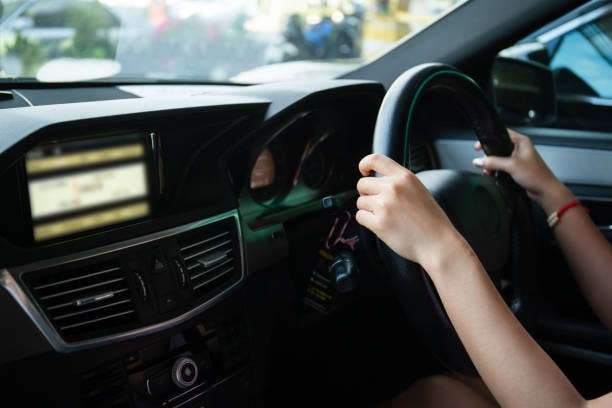
Driving in Thailand involves more than just adhering to traffic laws; it also entails understanding and practicing proper driving etiquette and gestures.
In Thailand, driving etiquette is highly esteemed, and drivers are expected to display courtesy and respect towards one another on the road. This includes using correct hand signals, refraining from aggressive driving, and being considerate of other drivers' needs. One common gesture is the head nod, often used by motorcyclists. As it can be challenging to see the driver inside a car due to tinted windows, this gesture is predominantly employed by motorcyclists.
If a motorist nods their head up, it signifies they are yielding the right of way. In response, you can show appreciation by bowing your head with a simple downward nod to acknowledge and thank them for yielding. Conversely, you may encounter drivers bowing their head with a downward nod, indicating they are taking the right of way.
1. Activate hazard lights for emergencies and temporary parking.
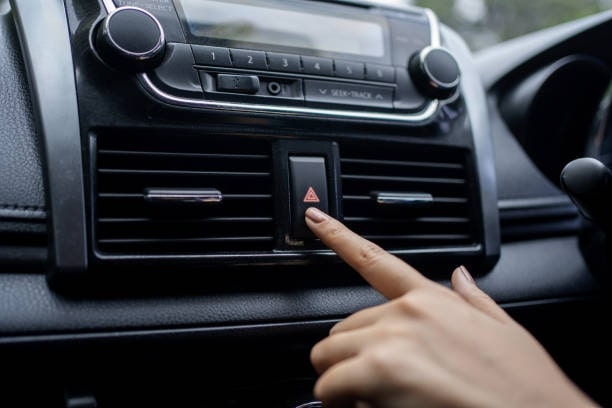
Hazard lights, also known as emergency lights, are typically activated by pressing a button on your dashboard and are intended to alert other drivers to a potential danger or emergency situation. In Thailand, locals often use hazard lights when they need to slow down or stop at the side of the road, such as when changing a tire or experiencing car trouble. They can also be beneficial during heavy rain or fog, enhancing visibility for all road users. Additionally, drivers in Thailand sometimes use hazard lights as a brief "thank you" gesture.
However, it's important to note that hazard lights should not replace turn signals or be used to indicate turns. Doing so can be hazardous and confusing for other drivers, particularly in heavy traffic or on highways.
Therefore, it's essential to use hazard lights judiciously and prioritize safety on the road.
2. Avoid trailing emergency vehicles when you're stuck in traffic.
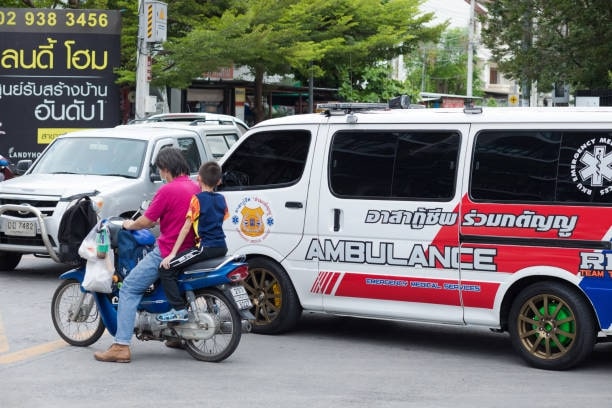
When driving, it’s important to be aware of emergency vehicles such as ambulances, fire trucks, and police cars. These vehicles often have to travel quickly to reach their destination, and it’s crucial for other drivers to yield and give them enough space to do so safely. Emergency vehicles in Thailand are equipped with sirens and flashing lights to signal their approach. If you hear or see an emergency vehicle, you should immediately pull over to the side of the road and stop.
However, due to heavy traffic, drivers often struggle to find a place to pull over in Thailand’s cities, resulting in the law being disregarded at times. But, if you have the space for it, make sure to check your surroundings for other emergency vehicles before proceeding.
It’s also important to note that you should never try to follow or pass an emergency vehicle. Doing so can be dangerous and may hinder the progress of the emergency responders. In addition, make sure to avoid blocking intersections or crosswalks, as this can delay emergency vehicles and cause unnecessary risk to others.
3. Yield and take turns with other vehicles on the road.
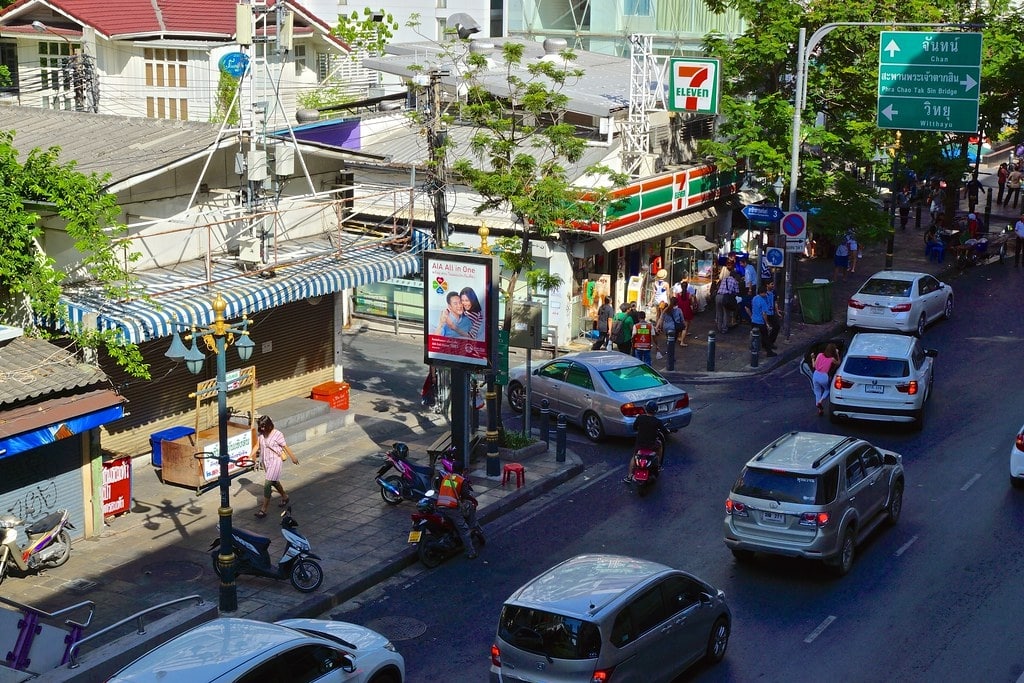
When driving, it's crucial to understand the concept of right of way, which determines who has priority when vehicles meet at an intersection or merge onto the same road.
In Thailand, the usual rule is that vehicles approaching from the right have the right of way. However, this may change based on the circumstances and local traffic regulations.
Stay mindful of other vehicles around you and signal your intentions clearly using hand signals or turn signals. This helps prevent confusion and reduces the risk of accidents.
4. Be cautious of motorbikes maneuvering between cars in traffic.
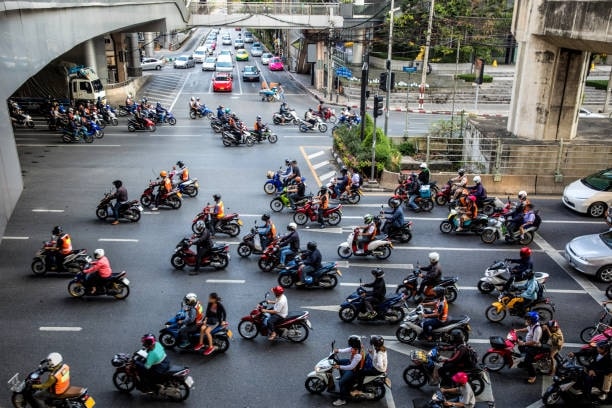
Motorcycles are a popular means of transportation in Thailand, and it's important to be mindful of them while driving.
Be aware that motorcycles in Thailand often maneuver through traffic and may even travel on the wrong side of the road. Stay vigilant of your surroundings, especially when changing lanes or making turns.
Give motorcycles ample space. They are smaller and more maneuverable than cars, allowing them to navigate through tight spaces. Always assume there could be a motorcycle nearby and leave enough room for them to pass.
Many motorcycle riders in Thailand do not wear helmets, which can pose a risk in case of an accident.
5. Learn the safe way to overtake vehicles on the road.
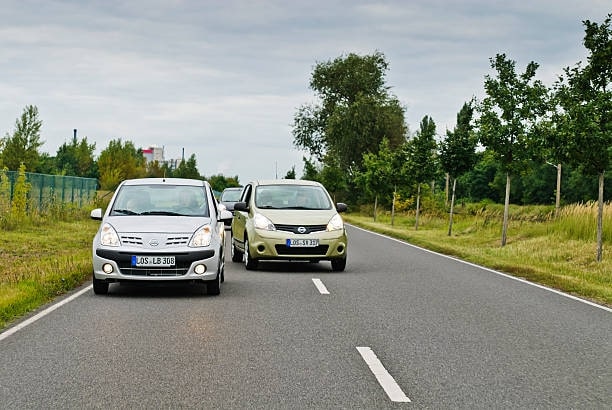
Passing other vehicles on the roads in Thailand can be tricky due to the heavy traffic and the large number of motorbikes and scooters. Here are some tips to make passing easier:
Pay attention to the road ahead and anticipate when you need to pass. Look for signs like broken lines or arrows indicating passing zones, and watch out for oncoming traffic.
When passing, always use your turn signal to show you're changing lanes. Check your mirrors and blind spots before moving over, and keep a safe distance from the vehicle you're passing.
Pass swiftly and efficiently. Don't stay in the passing lane too long, as it can be dangerous for other drivers.
After passing, signal your intention to move back to your original lane and merge safely.
Stay alert to your surroundings, adjusting your speed and position as needed. If you come across unexpected obstacles like potholes or debris, slow down and proceed carefully.
6. Be vigilant of dangerous driving behaviors exhibited by local drivers.
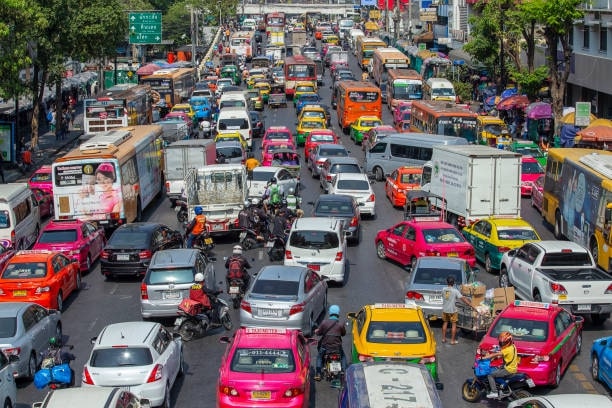
When driving in Thailand, it's crucial to be mindful of the unsafe driving behaviors of local drivers.
Expect abrupt lane changes, reckless driving, and vehicles going against traffic flow. Passing on narrow roads is frequent.
Ensure your safety by maintaining a safe distance from other vehicles and predicting their actions.
Stay vigilant, attentive, and observant, using your mirrors effectively and being cautious of blind spots, particularly during lane changes and turns.
7. Familiarize yourself with the directions to your destination before you start your journey.

To prevent surprises like one-way roads and sudden turns, know your daily routes in advance.
Follow the traffic flow and watch out for smaller vehicles like tuk-tuks, taxis, and motorbikes.
Remember that driving customs vary across cities and provinces in Thailand. For example, drivers in Bangkok are often aggressive, whereas those in Chiang Mai drive more leisurely.
When moving between cities, adapt your driving style to match the local norms to maintain smooth traffic flow.
Understanding Thai Traffic Regulations and Road Signs: Essential Information
Thailand's traffic laws may vary from those in your home country, so it's crucial to grasp them before driving. Here's a summary of key traffic laws and regulations in Thailand that every driver should be aware of.
1. The typical speed on Thai highways is 90 km/h.
Just like in any country, following the speed limits on highways in Thailand is essential for your safety and to avoid legal penalties.
The speed limits vary based on the type of highway and location.
For standard four-wheeled vehicles, the speed limit on highways in Thailand is 100 km/h. Buses, public transportation, and trucks weighing less than 2.2 tons have a speed limit of 80 km/h.
Keep in mind that speed limits might be lower in specific areas like construction zones or areas with heavy traffic. Always pay attention to posted signs indicating speed limits and other regulations.
2. The maximum speed limit on city roads in Thailand is 90 km/h.
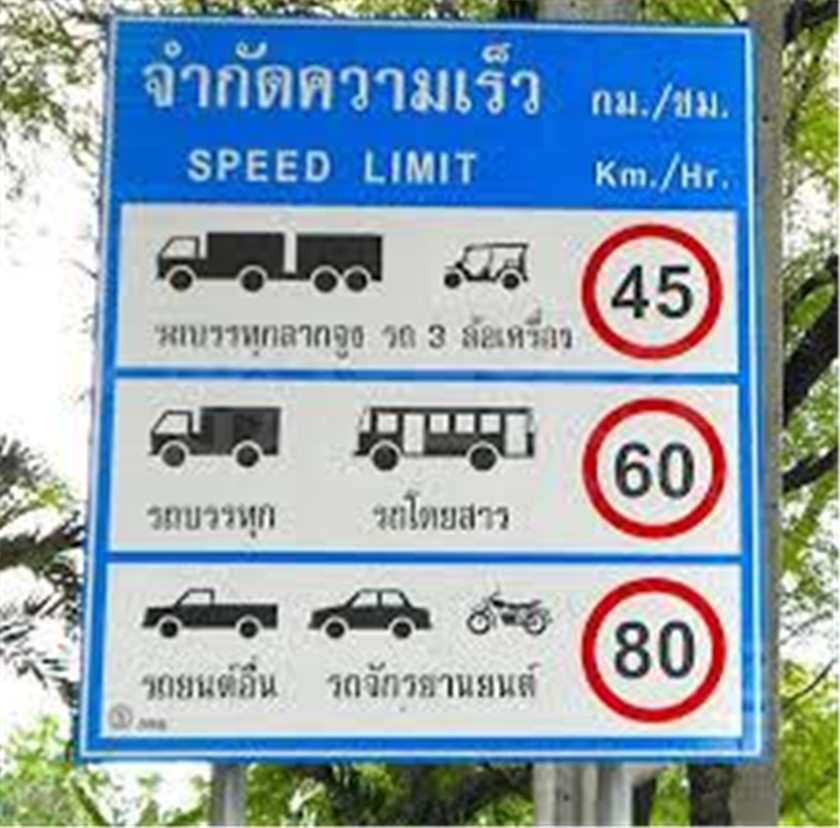
The maximum speed limit in Thai cities is usually 90 km/h, but it can be lower in some places.
Speed limits may change depending on the time of day and traffic conditions. For instance, they might be reduced during rush hour to prevent accidents.
Additionally, some roads, like those near schools or with heavy pedestrian traffic, will have lower speed limits posted.
3. Lane markings are very important.
Lane markings are painted lines on the road that show the boundaries of each lane. They help drivers stay in their lanes and prevent accidents.
In Thailand, there are usually three types of lane markings: solid white lines, broken white lines, and yellow lines. Always pay attention to these markings and follow them.
Ignoring lane markings can lead to fines and accidents. Also, remember to always use your turn signals when changing lanes, even for small movements within your lane.
| Lane Marking | Description | Meaning |
|---|---|---|
| Solid White Line | A continuous white line that marks the outer edge of a lane | Do not cross, helps drivers maintain lane discipline |
| Dashed White Line | A white line with short dashes that marks the inner edge of a lane | Safe to change lanes if it is safe to do so |
| Solid Yellow Line | A continuous yellow line that marks the outer edge of a lane or separates opposing lanes of traffic | Do not cross, no passing |
| Dashed Yellow Line | A yellow line with short dashes that marks the inner edge of a lane or separates opposing lanes of traffic | Passing allowed if it is safe to do so |
| Double Solid Yellow Line | Two continuous yellow lines that mark the centre of a two-way road | Do not cross, no passing allowed from either direction |
| Double Dashed Yellow Line | Two yellow lines with short dashes that mark the centre of a two-way road | Passing allowed if it is safe to do so from either direction |
| Zigzag Markings | Two perpendicular zigzag lines along the road, with some horizontal lines in the middle | Do not load or unload in these areas since this will block the view of pedestrians crossing the road |
4. Obey the stop signs in Thailand.

Stop signs are commonly seen on roads and intersections in Thailand. They are crucial for the safety of drivers and pedestrians, requiring drivers to stop completely at specific points.
These red, octagonal signs have the word "stop" written in both Thai and English.
They are usually located at intersections, crosswalks, and other places where traffic needs to be controlled.
5. When there are no stop signs, yield to the vehicle on your right.
Intersections without stop signs are usually controlled by traffic lights or roundabouts, but many have no traffic control devices at all.
At these intersections, be extra cautious and watch for other drivers, pedestrians, and motorcyclists.
The general rule is to yield to the vehicle on your right, but stay alert for vehicles from all directions.
Even if you have the right of way, drive defensively and be ready to stop or yield if needed.
In Thailand, some drivers may run red lights or ignore traffic signals, so always be cautious.
6. Many roads in Thailand have traffic cameras installed.
Traffic cameras are placed all over Thailand to enforce traffic laws and catch offenders. They take pictures of vehicles and their license plates. If you break a traffic law, you'll receive a ticket mailed to the registered owner’s address.
These cameras can also catch violations like running red lights and using bus lanes improperly. Stay aware of your surroundings and obey traffic rules to avoid receiving a ticket by mail.
7. You should always carry your International Driving Permit (IDP) and driver's license with you at all times.
When driving in Thailand, always carry both your International Driving Permit (IDP) and your driver’s license with you.
Using a license from your home country to drive in Thailand is illegal and can result in a minimum fine of THB500. Insurance coverage may also be invalid without a Thai driver’s license or IDP.
Drivers with a license from an ASEAN country are exempt from this requirement.
Note that the IDP is valid for one year from the issue date, so you must renew it annually if you intend to keep driving in Thailand.
8. You can identify the type of traffic police by looking at their helmets.
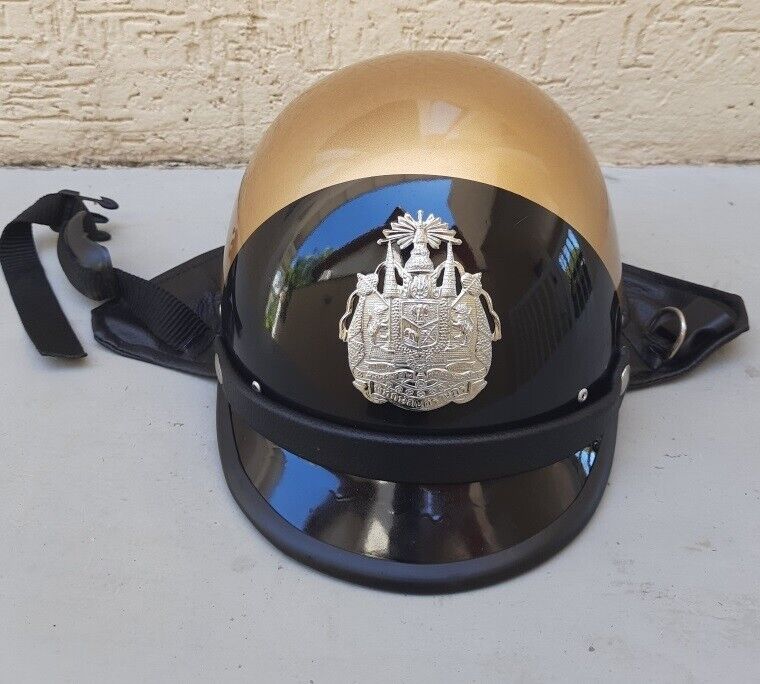
In Thailand, traffic laws are enforced through checkpoints rather than pulling over individual vehicles. These checkpoints are set up in various locations across cities and major highways.
Checkpoints are often placed in inconspicuous spots like blind corners or at province borders on highways. If a driver coming from the opposite direction flashes their high beams a few times, it signals a police checkpoint ahead.
The color of the officer’s helmet indicates the type of checkpoint: white helmets for traffic police and gold helmets for officers handling serious infractions like illegal substances.
If you receive a ticket, avoid arguing or attempting to bribe the officer. Accept the ticket and pay the fine at a designated location within the specified time frame to avoid legal consequences such as an arrest warrant.
Some traffic police may not speak fluent English, so knowing basic Thai or having a Thai-speaking companion or translator can be helpful.
9. Tickets for penalties and fines are typically processed within 7 to 14 days.
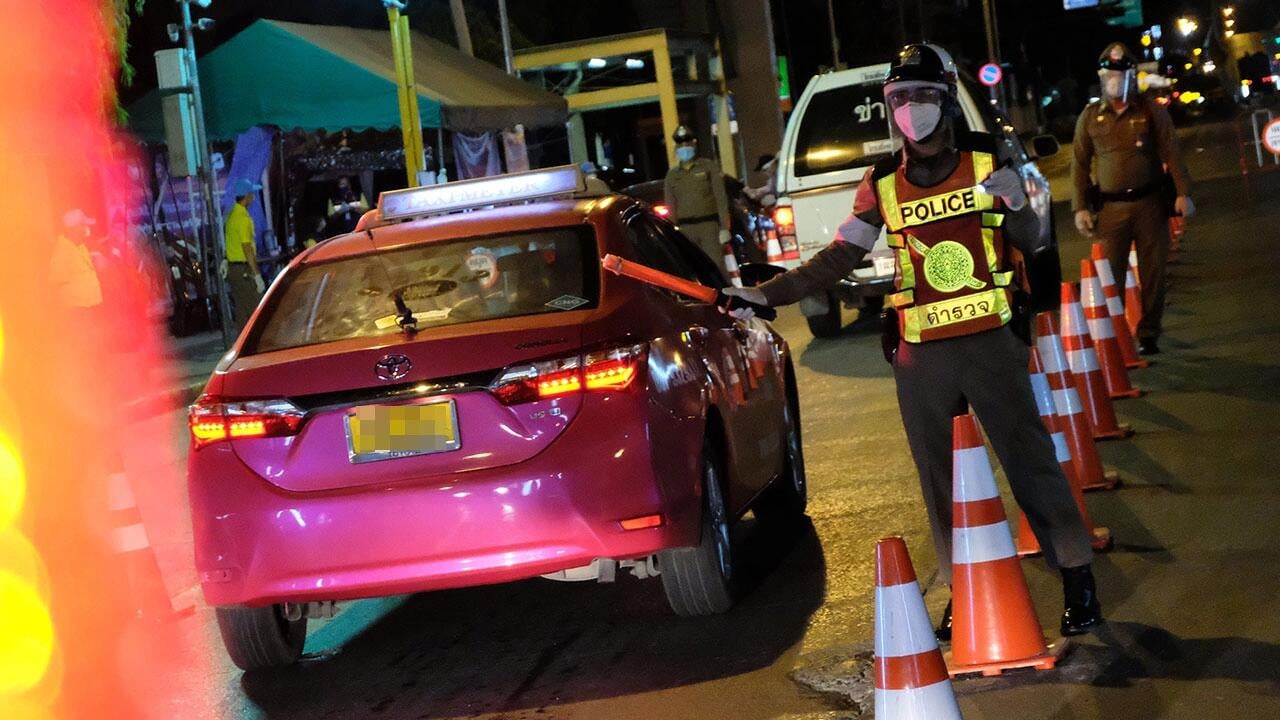
If you receive a traffic ticket in Thailand, it’s crucial to handle it correctly to avoid further legal issues.
You typically have 7 to 14 days to pay the ticket. Payment can be made at a police station, post office, or through your bank app by selecting “Royal Thai Police – Police Ticket” in the payment menu.
If given the option to pay immediately, such as at highway checkpoints, always request an official receipt.
If you receive a ticket for a specific offense and are stopped again for the same offense shortly after, show the police officer your ticket as proof that you are addressing the issue. This often prevents you from getting another ticket.
| Traffic violations | Fine |
|---|---|
| Driving without a licence | 200 THB (official) / 500 THB 1,000 THB (tourist) |
| Illegally stopping in restricted areas | 300 THB |
| Using an unroadworthy vehicle | 400 THB |
| Failing to stop for an emergency vehicle | 400 THB |
| Parking on the bridge | 400 THB |
| Using a cell phone without auxiliary equipment | 500 THB |
| Driving without licence plates | 500 THB |
| Failing to comply with traffic signs on roadsides | 500 THB |
| Driving on roadside pavements | 500 THB |
| Parking or leaving stalled vehicles to obstruct traffic | 500 THB |
| Driving wrong-way | 500 THB |
| Overtaking on the left (a practice known as undertaking) | 500 THB |
| Changing lane over solid white line | 500 THB |
| Contravening emissions regulations | 1,000 THB |
| Negligent or "scary" driving | up to 2,000 THB |
| Reckless driving | up to 2,000 THB |
| Driving against traffic | 2,000 THB |
| Driving without safety belts | 2,000 THB |
| Driving without helmet (each person) | 2,000 THB |
| Speeding | up to 4,000 THB |
| Disobeying traffic lights | 4,000 THB |
| Run on the red light | 4,000 THB |
| Fail to stop at Zebra crossing | 4,000 THB |
| Gather to race, illegally modify their vehicles or participate in suspicious activities | 5,000 THB- 10,000 THB +(up to three months in prison) |
| No regard for others' safety | 5,000 THB - 20,000 THB + (up to one year in prison - usually not for tourist) |
| The first drunk driving offence | 5,000 THB - 20,000 THB + (up to one year in prison - usually not for tourist) |
| Repeat drunk driving violations within two years of the first incident | 50,000 THB - 100,000 THB + (up to two years in prison) |
Frequently Asked Questions about Safe Driving in Thailand
- Is it safe for foreigners to drive in Thailand?
- Driving in Thailand can be risky, especially for foreigners who are unfamiliar with local driving habits and rules. It's advisable to be cautious and consider using public transportation instead.
- What is the first rule of driving in Thailand?
- The main rule of driving in Thailand is to drive on the left-hand side of the road.
- What do I need to know before driving in Thailand?
- Before driving in Thailand, remember to drive on the left-hand side of the road, understand local driving habits and etiquette, familiarize yourself with the highway code, carry essential documents, and be prepared for risky driving behaviors.
- Is it safe to travel by car in Thailand?
- Yes, traveling by car in Thailand is generally safe if you adhere to traffic rules and drive defensively. However, some areas pose higher risks, like rural roads and certain islands, where accidents are more frequent.